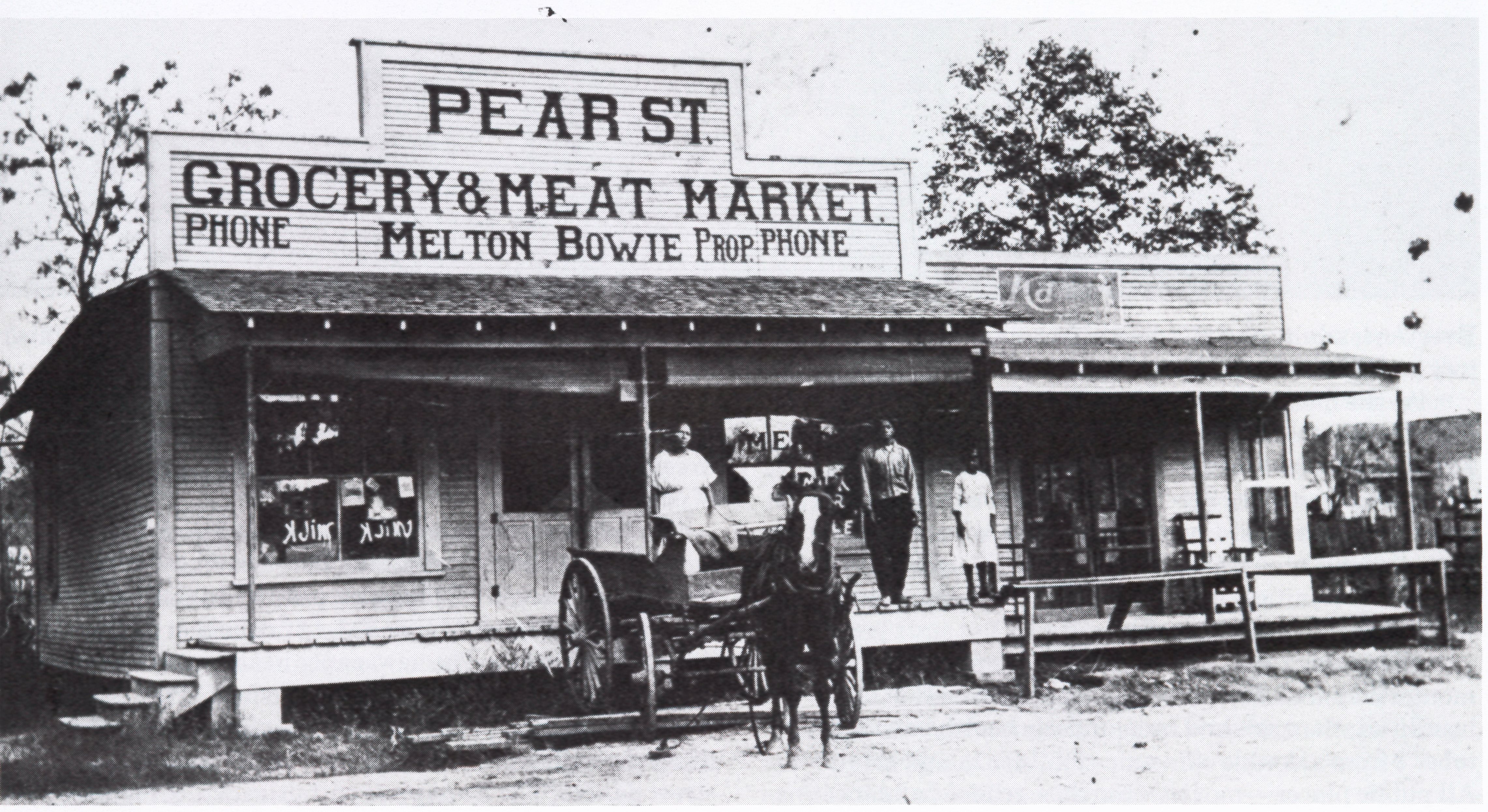.JPG)
By Judith Linsley
During the 1880s and 1890s, East Texas enjoyed a huge lumber boom. In Beaumont, sawmills lined the Neches River, both north and south of the business district.
Lumber companies hired many African Americans; in 1880, blacks comprised 55 percent of the sawmill labor force. Others worked for the railroad stations or freight facilities, located in or near downtown. Many of these black workers were farmers or sharecroppers from rural areas. From 1860-1880 Beaumont's black population increased 150 percent; by 1880, 45 percent of Beaumont's population was African American.
African-American neighborhoods in Beaumont were located near places of employment, such as the lumber mills. North of the business district stood three sawmills: Long and Company, Reliance Lumber (later Kirby) and Texas Tram and Lumber.
The 1900 census lists African Americans as actually living inside the Reliance Lumber Company yard; that settlement was called "Red Town" because the houses there were painted red. A large number also lived outside the yard but nearby, along the roads leading north and northwest out of Beaumont. As the city's African-American population increased, the neighborhood around the Reliance yard grew, forming the core of what was known as the North End black community.
South of the business district, near the present-day Port of Beaumont, lay the Beaumont Lumber Company and Beaumont Sawmill. African Americans who worked there settled nearby. Following the Spindletop oil discovery in 1901 and the construction of the Security Refinery along the Neches River, more African Americans moved into the neighborhood to work in the oil industry. The area continued to grow with completion of the Port of Beaumont in 1916 and the opening of Charlton-Pollard High School in 1917. This neighborhood was called the South End black community or the Charlton-Pollard neighborhood.
A third African-American settlement grew up around a brickyard built in the 1880s north of town along the Texas and New Orleans Railroad. Many of these black brickyard workers immigrated from Louisiana. It was as old as the neighborhoods around the lumber yards but not within Beaumont's corporate limits until about 1940.
When J. Frank Keith put in his sawmill at Voth about 1904, in north Jefferson County along Pine Island Bayou, African-American workers lived nearby. The rural mill community was self-contained, with a school for whites and one for blacks. Beaumont annexed Voth in 1957.
The black neighborhood in South Beaumont known as the Pear Orchard probably developed after 1901, with the Spindletop oil boom. Before then, no single industry was located nearby, although African Americans worked in rice fields and on ranches located to the south and west. After the boom, many oil field workers doubtless made their homes in this part of town.
Because Jim Crow racial segregation limited or completely prohibited African-American usage of white facilities, Southern African Americans learned self-reliance. A thriving black business district grew in the late 1800s, just south and west of the white business district. There, restaurants, medical, dental, and legal services, a hotel, and even a YMCA offered services to African Americans. Years later, the American Missionary Association established social and medical services in the North End area. By the early 20th century, Beaumont's black neighborhoods had the configurations that would remain until desegregation began to change them.

"The Melton Bowie family owned the Pear Street Grocery in the Charlton-Pollard neighborhood in the early 20th century."